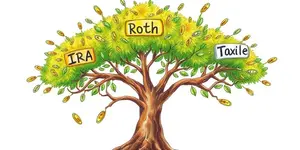
Planning for retirement can feel overwhelming, but with the right tools you can take the stress out of investing and stay on track without constant effort. One of the most powerful solutions available today is the target-date fund.
Target-date funds are specially designed investment vehicles—typically mutual funds or ETFs—that align a diversified portfolio with a specific retirement year or financial goal. When you choose a fund labeled with your expected retirement date, you gain access to a ready-made, long-term portfolio managed by professionals.
At inception, these funds invest heavily in stocks for maximum growth potential. As the target date approaches, they automatically shift allocations toward bonds and cash, reducing risk. This gradual reallocation is known as the glide path formula.
One of the greatest appeals of TDFs is that they operate on autopilot. After your initial selection, fund managers handle:
Many employer-sponsored plans, such as 401(k)s, feature target-date funds as default options, making them an easy choice for employees seeking a hassle-free approach.
The glide path is the sequence of asset shifts that transitions your portfolio from higher risk to lower risk. For example, a 2065 fund might start with 90% equities and 10% fixed income in early decades, moving to 50% equities and 50% bonds by the target date, then to 30/70 as you enter retirement.
This method ensures that your investments become more conservative as you near the time when you’ll begin drawing on your savings, helping to protect against market downturns.
Target-date funds offer a suite of advantages that appeal to both novice and experienced investors:
Despite their convenience, target-date funds are not without caveats. Investors should remain mindful of the following:
To counter these issues, periodically review your TDF’s performance and underlying strategy. Compare different providers, such as Vanguard, Fidelity, BlackRock, and J.P. Morgan, to ensure you’re getting the best fit and value.
You’re never locked into a single target-date fund. Life events and changing retirement plans may warrant adjustments, such as:
This flexibility allows you to stay on track with your evolving goals without abandoning the automated framework.
Follow these steps to select a fund that complements your retirement plan:
Consider Jane, age 30, who wants to retire by 2060. She invests $5,000 annually into a 2060 target-date fund within her 401(k). By leaving the management to professionals and maintaining consistent contributions, Jane leverages:
Without obsessing over market dips or trying to time the next rally, she stays focused on her career and personal life, confident her investments are on track.
Target-date funds distill complex retirement planning into a single, all-encompassing solution. By harnessing professional management, strategic asset allocation shifts, and behavioral safeguards, they deliver a streamlined path to your financial future.
While no investment is entirely risk-free, TDFs remove the heavy lifting from your shoulders. With periodic reviews and smart comparisons, you can enjoy peace of mind and focus on what matters most: building the life you envision for your golden years.
Take control of your retirement journey today by exploring target-date funds available in your retirement plan—and let automation guide you toward a more secure tomorrow.
References













